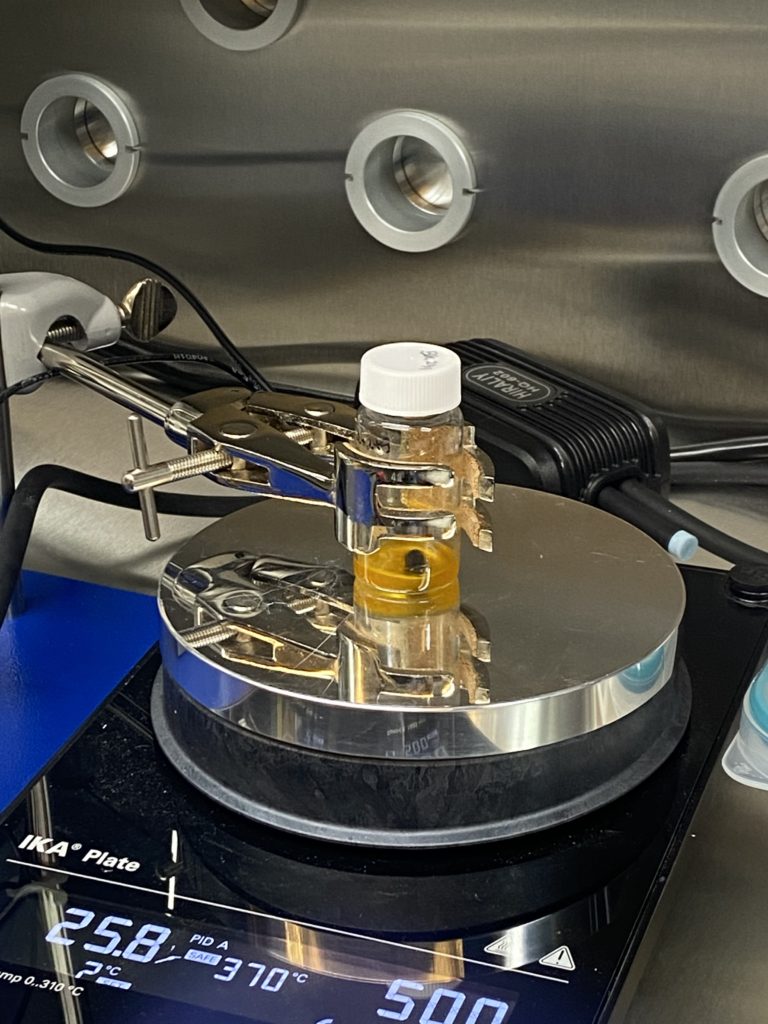We operate the Heavy Element Radiation Laboratory (HERL), as well as equipment in several other labs.
We have several radiochemical laboratories and a long history of handling radioactive materials safely. We work with transuranic materials routinely and fully conform to Department of Energy (DOE) safety requirements. The safety oversight is provided by LBNL’s EH&S Radiation Protection Program. The central laboratory facility consists of three interconnecting laboratories with fume hoods, controlled atmosphere glove boxes, dedicated radiochemical gloves boxes, an x-ray powder diffraction camera, and standard wet chemical laboratory apparatus. Our nuclear counting room shares internal access to the main laboratories and has five low noise solid state Ge γ-spectrometers plus an α-spectrometer. A scintillation counter is also available.
Surrounding the main radiochemistry laboratories are specialized, satellite characterization laboratories designed to accommodate radionuclides. Our laser facility has a pair of Nd-YAG lasers, an MOPO, dye lasers, an Ar-ion laser, optical cryostats, several spectrometers, and a CCD camera. A single crystal and powder diffractometer, an EPR, UV/VIS/IR spectrometers, and an older 90 MHz NMR are maintained in small laboratories. Our synchrotron radiation laboratory has a modest surface science capability and is used for staging synchrotron radiation experiments. We utilize a multi-processor Sun SparcStation for computationally intensive relativistic calculations and Alpha-based DEC machines for data processing. We routinely complement laboratory-based studies of actinides with synchrotron radiation investigations. User facilities at the Stanford Synchrotron Radiation Laboratory (SSRL), the Advanced Photon Source (APS), and the Advanced Light Source (ALS) are used to conduct synchrotron radiation investigations with radioactive materials.
We have a synchrotron radiation (SR) program at the SSRL utilizing x-ray absorption spectroscopy (XAFS) as a tool for characterizing radionuclide speciation in a variety of experiment. We have developed a state-of-the-art multi-element germanium detector with sufficient resolution at high counting rates to obtain XANES and EXAFS data on elements of interest at concentrations <10-5 M in solution or <10 ppm in solids. The specialized experimental equipment necessary to perform XAFS experiments with radioactive samples has been developed and employed at SSRL for the investigation of several radionuclide systems. The experimental procedures concerning the safety issues of handling radionuclides, including transuranics, at a DOE SR user facility have been addressed and experiments have been performed without the requirement of full time EH&S assistance.
Facilities at the ALS that are utilized for our actinide research program include beamlines for scanning transmission x-ray microscopy, full-field x-ray microscopy, soft x-ray spectroscopy and photoemission, infrared spectromicroscopy, and x-ray fluorescence microspectroscopy. Facilities under development that will be used include a new x-ray microtomography beamline, and the ALS Molecular Environmental Science beamline. We also have several end station modules and UHV chambers optimized for environmental research, and are developing new chambers especially for “wet spectroscopy” applications.


